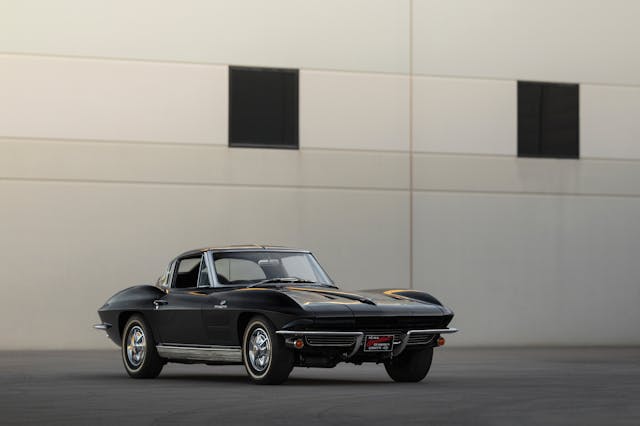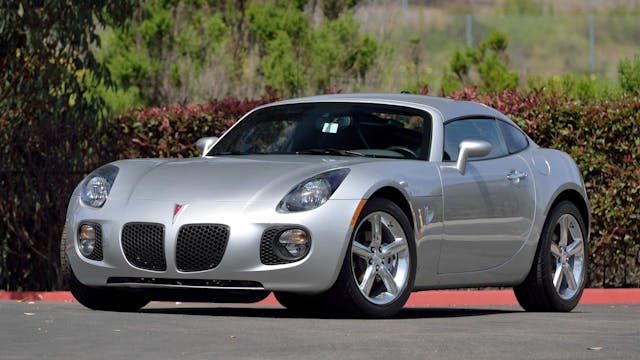6 collectible coupes worth more than their droptop siblings
There’s an old saying in the car hobby: “When the top goes down, the price goes up.” It makes sense. A roadster, convertible, cabriolet, or targa does more than just put some sunshine on your face. It amplifies the sensory driving experience—more sights, more sounds, more smells. You feel more connected to the road. As with most rules, though, there are plenty of exceptions. Cisitalias from the 1940s and ’50s are one example. Mercedes’ 300SL Gullwing is another; for a long time, the coupes were worth significantly more than their roadster cousins. In this article, we decided to gather a list of exceptions that are a bit more mainstream. For these six cars, “when the top goes up, the price goes up.”
1978–85 Ferrari 308

The 308 was Ferrari’s high-volume seller for a decade and for many years it was one of the few affordable ways to get into a vintage Ferrari. When production began, it was only available as a fiberglass coupe called the 308 GTB. Steel bodies soon followed, and in late 1977 Ferrari introduced a targa-topped version called the 308 GTS. Beckoning ’80s playboys who needed to be seen in their brand-new Ferrari, the GTS outsold the coupe by a margin of four-to-one by the 308’s later years.
Now that the 308 is more collectible classic than flashy status symbol, rarity counts; 308 GTBs with their more rigid fixed roofs and much lower production numbers command higher prices. The #2 (Excellent) condition value for an early carbureted 1978 308 GTB is $78,000. That’s 15 grand more than the equivalent GTS. An early fuel-injected 308 GTBi in #2 condition is worth $45,000, while a GTSi is worth $40,000. Finally, the later 308 GTB QVs are worth $74,000 in #2 condition, while GTS QVs are worth $67,500.
1963 Chevrolet Corvette

Corvettes from 1963 are distinguished from later members of the C2 generation (1963-67) by their smaller engines and drum brakes. The coupes also have that pesky center post running down the rear window, a famous point of contention between designer Bill Mitchell and engineer Zora Arkus-Duntov. This so-called “split window” was a one-year only feature, because it really does compromise rear visibility. Yet ’63 coupes are among the most sought after of all C2 Corvettes precisely because of that vision-blocking styling flourish (nobody ever said ours was a rational hobby). Split-window coupes typically command between 50 to 100 percent more than comparably equipped ’64 coupes.
America’s sports car usually follows the “top goes down, price goes up” rule, but split-windows are the big exception, no matter the powertrain. Take the 327/340hp L76 model, for example. A split-window coupe with that engine in #2 condition is worth $139,000. The convertible is worth $91,800.
1978–83 Porsche 911

Porsche folks tend to take their driving pretty seriously, and it’s no secret that cars with a fixed roof tend to be lighter, tighter, and more rigid than the cars that open up their tops to the elements. Most Porsche models tend to be worth more in coupe form, whether we’re talking early 911 Coupes vs. Targas, 968 Coupes vs. Cabriolets, or Boxsters vs. Caymans; but let’s take the mainstream 911 of the 1980s—the 911 SC. In #2 condition, a 911 SC 3.0 Coupe is worth $53,500. A Targa is worth 44 grand.
2000–06 BMW M3

Like Porschephiles, Bimmer bros seem to value the rigidity of a fixed roof over the pleasure of wind-tousled locks. Worldwide production of the E46 (2000–06) Coupe was nearly double that of the M3 Convertible, and all these years later, demand still favors the Coupes. The #2 values for coupes range from $34,800–$46,700 (with later cars worth more), while convertibles range from $30,400–$35,900.
The difference is way more extreme if we look at the Z3-based M Cars. A “clown shoe” M Coupe carries a median #2 value of $52,000. That’s over twice the value of a Z3 M Roadster.
2009 Pontiac Solstice

The Pontiac Solstice is on that way-too-short list of American sports cars that aren’t Corvettes. It came along in 2006 as a home-grown Miata-fighter, soon followed by a reskinned version called the Saturn Sky. There were base and turbocharged versions of both, but unlike the Saturn, the Pontiac was available as a coupe.
Unfortunately, the Solstice Coupe came out in 2009, just in time for the Pontiac brand to get the axe from a bankrupt GM. The Delaware factory that built the Solstice shut down in July of that year, having completed just 20 Solstices with 2010 VINs.
Solstice production breaks down to nearly 66,000 cars total; coupes account for just 1200. Of those 1200, just 781 coupes came in turbocharged GXP trim. A decade later, that disparity has made Solstice coupes sought-after modern collectibles, while the roadsters languish as second- or third-hand oddballs. A 2009 Solstice GXP in soft-top form carries a #2 value of $16,600, but a GXP Coupe is worth $31,500.
1996–2002 Dodge Viper

The original Viper, the RT/10 Roadster, was the most exciting new Dodge in a generation when it debuted in 1991 (no offense to the 1984 Caravan). If ’90s kids had a Viper poster in the bedroom, though, it was a 1996 GTS coupe, probably a blue one with white stripes.
With the second-gen Viper, Dodge evolved its V-10 two-seater from barely tamed monster to a more usable driver, but did so without sacrificing any of the snake’s performance chops. In fact, performance improved with a better chassis, better handling, and more power. The RT/10 was still available, but the new coupe version, called the GTS, was bigger news. The race version of the GTS brought the Viper all its on-track glory, including class wins at Le Mans in 1999 and 2000. According to Brian Willey, a Viper expert and a regional president of the Viper Owners Association, “the GTS coupe captured the truest essence of form following function for the street and track. The result, 20 plus years later, is a greater demand for the GTS coupe.”
How much greater? The median #2 value for a second-gen Viper GTS is $53,100. For an RT/10, it’s $48,900.
Like this article? Check out Hagerty Insider, our free e-magazine devoted to tracking trends in the collector car market.


